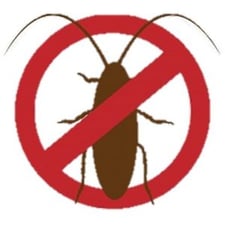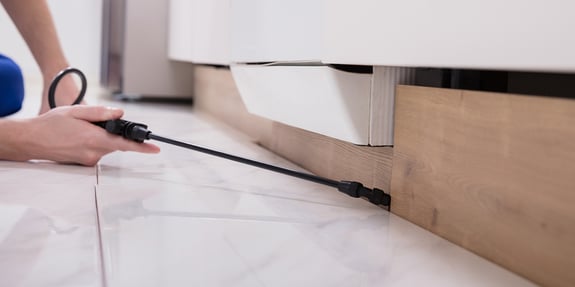Cockroaches have various common names including water bugs, croton bugs and palmetto bugs. There are at least 69 different cockroach species found in the United States and have been around since the ice age. Okay, maybe not, but it seems so because you can’t seem to kill them or it’s nearly impossible to get rid of them.
 Cockroaches are decomposers, feeding on dead or dying plants and animals. They are considered pests when they interact with people, invading lawns, gardens, homes, etc. They affect human health by spreading diseases, such as Salmonella, and ruin materials with the oily liquid secretion that has an offensive and sickening odor. They also produce allergens, which include their feces, shed skins and body parts such as antennae and legs. These can result in mild to severe rashes, other allergic reaction, such as asthma and, in extreme cases, can even cause death due to allergic reactions.
Cockroaches are decomposers, feeding on dead or dying plants and animals. They are considered pests when they interact with people, invading lawns, gardens, homes, etc. They affect human health by spreading diseases, such as Salmonella, and ruin materials with the oily liquid secretion that has an offensive and sickening odor. They also produce allergens, which include their feces, shed skins and body parts such as antennae and legs. These can result in mild to severe rashes, other allergic reaction, such as asthma and, in extreme cases, can even cause death due to allergic reactions.
They like to hide in dark, sheltered places during the day and come out to feed at night. Indoors, you find them mostly in areas with water, such as the kitchen, bathroom or laundry room. They also like to hide in your cupboards, behind loose baseboards, garages, sewers, attics. Outside you can find them in leaf litter, mulch, under vegetation, in tree holes and in palm trees.
It’s easy to bring them into your home or building as they can come in grocery bags from the store, cardboard boxes from deliveries, bookbags and backpacks that the kiddos bring home from school. If you manage a condo, you will find that cockroaches, like other pests, go from unit to unit very easily. If you have to treat one unit for cockroaches, more than likely you will have to treat another one, and another one and on and on.
Chemicals along will not eradicate them. This is the least effective way to control them. Using chemicals alone can result in insecticide resistance and, ultimately, very poor control. But don’t despair, there are ways you can help to keep them from coming into the building in the first place. Baits are the most highly effective due to their effectiveness and targeted application. Remember that it’s not a quick fix. It requires four to six weeks for a noticeable decrease in the cockroach population. Seeing more cockroaches after treatment means that it’s working
Educate your residents about things they can do to help keep them out. The more they know, the more they can assist you in ensuring you don’t have a problem in the future.
Eliminate water sources. Repair plumbing leaks, especially in kitchens and bathrooms. Get rid of standing water outside the building.
Eliminate food sources. Don’t leave food out on the counters or even dog bowls. Cockroaches don’t need a lot of food to survive but it does help them populate rapidly. Store and dispose of garbage properly. Seal garbage can lids and keep the garbage areas clean by wiping frequently. Wipe off counters and appliances often. Don’t leave dirty dishes in the sink. Regularly vacuum or sweep under and around furniture. Vacuuming can also remove cockroach egg cases that will not be killed by insecticides. Just remember to promptly dispose of the vacuum cleaner bag in an outdoor container.
Eliminate areas outside the building where the cockroaches can harbor. Seal cracks and crevices. Cockroaches can fit into cracks only about 1/16 inch and prefer spaces of about 3/8 inch. Pull mulch away from the building. You should always have a buffer between the building and the mulch bed. Only keep a thin layer of mulch. When you keep piling mulch upon mulch, this creates a perfect hiding place for cockroaches and other pests. This is true for termites as well as cockroaches. Cockroaches breed prolifically in pine straw mulch and poorly in gravel or on bare soil. Keep shrubbery and ornamentals well-trimmed and away from the house.
Make sure your landscaper is keeping trees and other shrubbery from touching the building. Ivy is a favorite breeding place for outdoor cockroaches. Keep clutter from accumulating. Check your garbage or trash room frequently. Check attic vents and make sure that large openings around the building are screened (think the dryer vent). Make sure cracks are caulked or sealed around doors, windows, plumbing and electrical. Make sure you have good weather stripping around your doors.
